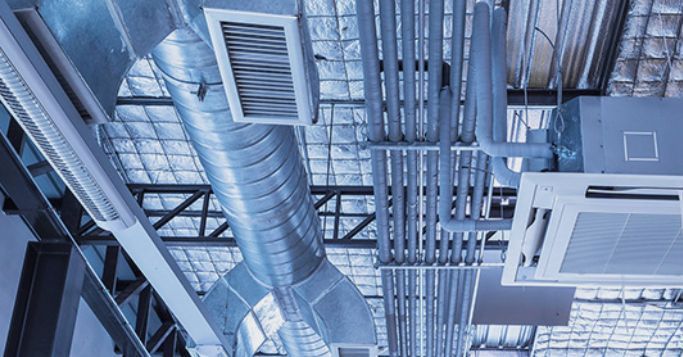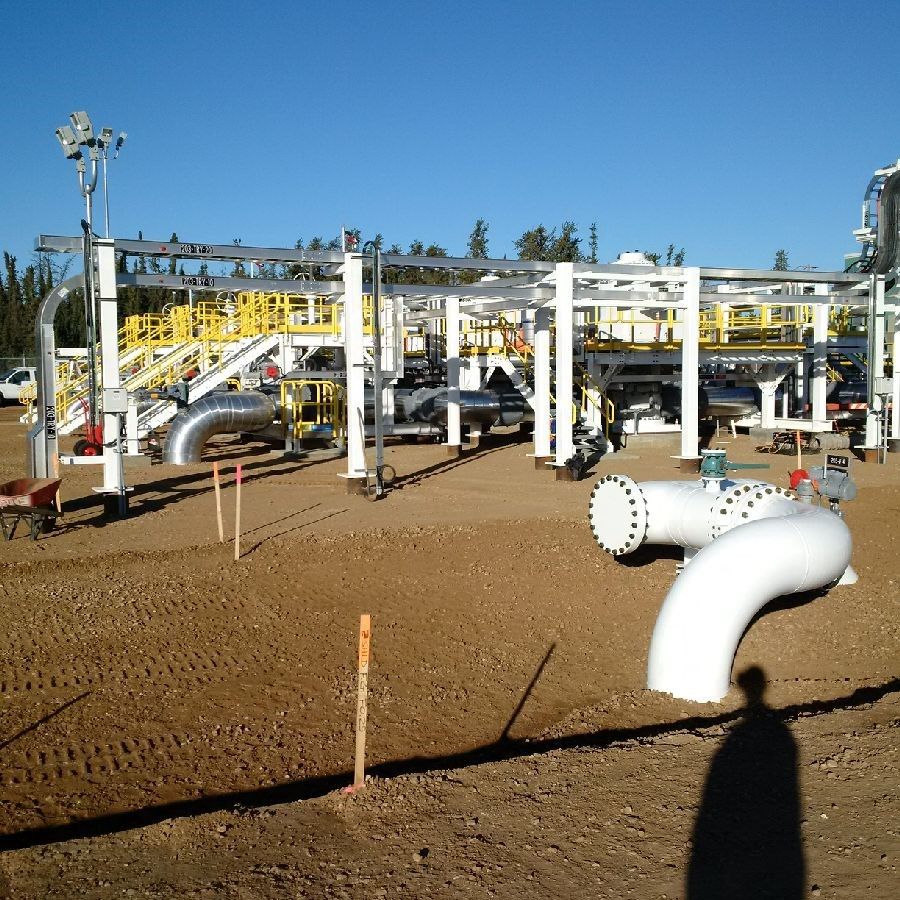April 2021
Healthy Air Must Flow
The risk of failed ventilation can no longer be minimized.
Imagine the HVAC fails in your facility ten or twenty years ago. After the repair bill hits, a decision is made to avoid that cost in the future, taking operating expenses and asset lifecycles into account. The smart people in the room try to weigh the human cost of discomfort due to lost temperature and humidity control, but it’s hard without clear numbers. A plan is made, consensus is built, hands are shook, and things move forward.
Today, the handshakes feel like signs of a simpler time, but it is the evaluation of costs that should concern us. A very big risk has not been accounted for that is very clear to us now, after 2020. What was missed? In our imaginary building ten years ago, there was also a significant rise in sick days the next week. Perhaps someone connected the rash of colds to the lack of good airflow, but that concern did not make it up the chain to the decision makers.
The truth is, building owners and operators are very well-practiced at accounting for the cost of repairing or replacing a failed piece of equipment. Failed ventilation itself, on the other hand, has many more risks that owners and operators are less practiced at accounting for, but should no longer be left off the list. And while the discomfort of poor temperature control has real impacts on performance, when the HVAC goes down, buildings lose more than temperature control. Lack of airflow and humidity control can both lead to increased exposure to pollutants and pathogens.
The Cost of Poorly Maintained Ventilation Systems
The financial impact of a pandemic event like COVID-19 may be incalculable. Before the SARS-CoV2 virus, however, experts were already working hard to expand our understanding of poor indoor air quality and educate the public about those risks and costs. In fact, indoor air was believed to be a major environmental factor by 1850. The fact that we spend 90% of our time indoors is often cited, which gives crucial context to the EPA’s finding that certain indoor pollutant levels were 2 to 5 times larger than concentrations outside.
ASHRAE (the American Society of Heating, Refrigerating and Air-Conditioning Engineers) has set and raised standards for ventilation to protect indoor air quality as our understanding of indoor air quality issues has grown. Standards help make it clear that a poorly maintained ventilation system risks a sub-standard indoor environment, but the costs of those risks depend on the various health impacts studied. One study cites the annual cost of care for upper and lower respiratory tract infections at $36 billion and the cost of lost work at $34 billion. The same study found that 23% of office workers reported symptoms of sick-building syndrome improved away from their work environments – and calculates the cost of sick-building syndrome to businesses nationwide at
$60 billion.
Another way of looking at the cost of indoor air quality is the opportunity lost: the benefits of improved indoor environments have been calculated to be 18 to 47 times greater than the costs.
HVAC Downtime Can Be Avoided
For ventilation to remain adequate for our indoor environments, the HVAC equipment responsible for that ventilation simply cannot break down. HVAC systems have evolved to improve efficiency and give us better control over environments, and those systems have multiple components that should be properly cared for to avoid issues: from compressors to coils, and from variable-speed fans to high-efficiency filters.
Since the COVID-19 pandemic, standards organizations ASHRAE and the CDC have both stressed the importance of increasing ventilation to reduce pathogen count in shared spaces, including recommendations to discontinue use of demand controls that may reduce ventilation and increase airflow to spaces when occupied. These recommendations may increase the load on an HVAC system, and a poorly maintained system is less equipped to stay operational and efficient under those conditions.
Guidance on increasing filtration for HVAC systems also notes that increasing filter efficiency can lead to reduced airflow. Compensating can increase energy use as fans and components work harder. A poorly maintained system is also in danger of responding inadequately to those needs.
When the System Is the Problem
A poorly maintained HVAC system can be a source of indoor pollutants itself. Filters, air ducts, cooling coils, and drain pans are all examples of failure points where lack of attention can introduce unwanted contaminants.
Imagine a food safety inspector asking why a restaurant kitchen is so filthy, and the owner responds: “Well, we cleaned it when it was built.” The food we eat shouldn’t be produced by a contaminated system, and the air we breathe shouldn’t arrive through one.
Poorly maintained cooling coils, drip pans, or cooling towers have been found to be the cause of respiratory diseases (like legionnaires). In one estimate, the interior surface area of air ducts is 10% of the floor of office spaces, and dust accumulation there can promote growth and release of micro-organisms and metabolic products into the air.
Just Open a Window?
When indoor ventilation breaks down, simply opening a window may feel like a great temporary fix. However, not every facility has the option, and the sad truth is that exposure to outdoor air carries risks we’re also continuing to learn about. A 2021 Stanford-led study found that children’s exposure to outdoor pollutants, even for only one day, led to changes in gene expressions that impacted their long-term chances of heart disease.
Limited access to outdoor air is also a problem for facility’s response to pathogen spread indoors. In recommendations for reducing exposure to the virus that causes COVID-19 pandemic, the CDC noted that opening windows could reduce the concentration of viral particles inside. That recommendation is hedged with important caveats, however, such as using caution in highly polluted areas. In fact, the CDC goes on to recommend:
Ensure ventilation systems operate properly and provide acceptable indoor air quality for the current occupancy level for each space. – CDC
It’s Not All Downside
Studies show that improved indoor air quality has positive effects. A 2015 study found enhanced ventilation, including reduction in volatile organic compounds, led to increased cognitive performance scores, with improvements in information usage and crisis response. The cost of enhanced ventilation may be increased load on the system, but a well-maintained and optimized system can help a facility deliver the benefits of improved indoor air quality cost effectively.
The Time Is Now
Given the health risk that poor indoor air quality poses to the people who share the air in our facilities, it may be time to consider HVAC a mission critical asset. The first step in improving the indoor air quality in our facilities is ensuring that ventilation meets or exceeds clear guidelines for airflow. Keeping those systems running optimally may be a cost, but when compared to the risks of poor ventilation passed on to the people in our facilities, the benefits of proactive maintenance are clear.
Resources:
1 https://www.ncbi.nlm.nih.gov/pmc/articles/PMC4591743/
2 https://www.epa.gov/indoor-air-quality-iaq/introduction-indoor-air-quality;
3 https://www.ncbi.nlm.nih.gov/books/NBK143947/
4 https://pubmed.ncbi.nlm.nih.gov/15330772/
5 https://www.epa.gov/report-environment/indoor-air-quality#:~:text=Americans%2C%20on%20average%2C%20spend%20approximately,higher%20than%20typical%20outdoor%20concentrations.
6 https://www.epa.gov/indoor-air-quality-iaq/inside-story-guide-indoor-air-quality
7 https://www.sciencedirect.com/science/article/abs/pii/S0360132315000839
8 https://escholarship.org/content/qt57c3z448/qt57c3z448_noSplash_4bd396e2fac519170f5fdcf9e123dbfc.pdf 9 https://escholarship.org/content/qt57c3z448/qt57c3z448_noSplash_4bd396e2fac519170f5fdcf9e123dbfc.pdf 10 https://onlinelibrary.wiley.com/doi/pdf/10.1111/j.1600-0668.1997.t01-1-00002.x
11 https://www.ashrae.org/about/news/2020/ashrae-issues-statements-on-relationship-between-covid-19-and- hvac-in-buildings
12 https://www.cdc.gov/coronavirus/2019-ncov/community/ventilation.html
13 https://www.ashrae.org/file%20library/technical%20resources/ashrae%20journal/2020journaldocuments/72-74_ieq_schoen.pdf
14 https://www.ashrae.org/technical-resources/filtration-and-disinfection-faq
15 https://www.cdc.gov/niosh/topics/indoorenv/hvac.html
16 https://www.ncbi.nlm.nih.gov/books/NBK143947/
17 https://www.researchgate.net/publication/223722476_Why_when_and_how_do_HVAC-
systems_pollute_the_indoor_environment_and_what_to_do_about_it_The_European_AIRLESS_project 18 https://news.stanford.edu/press/view/38438
19 https://www.cdc.gov/coronavirus/2019-ncov/community/ventilation.html
20 https://www.cdc.gov/coronavirus/2019-ncov/community/ventilation.html
21 https://www.hsph.harvard.edu/news/press-releases/green-office-environments-linked-with-higher-cognitive- function-scores/
Article provided by ABM Franchising Group LLC
Recent Articles
- March 2025
Best Managed Company - Platinum Member
The Trotter & Morton Group of Companies is proud to announce it is a Platinum Member of Canada’s Best Managed Companies! - February 2025
Trotter & Morton Facility Services 2025 Awards
Congratulations to our incredible team for all their hard work and dedication receiving multiple awards at the annual Linc Continuing Education Conference in 2025. - February 2025
Draw Energy Acquisition
Welcome, Draw Energy, to the Trotter & Morton Group of Companies.





